Dell XPS 13 Review
by Brett Howse on February 19, 2015 9:00 AM EST- Posted in
- Laptops
- Dell
- Ultrabook
- Broadwell-U
- XPS 13
Gaming Performance
Normally on an Ultrabook we would not dedicate an entire page to gaming performance, because the integrated GPUs do not perform very well on our gaming tests. However, with this being our first example of Broadwell-U, it is a good time to revisit this and see how the new graphics capabilities of Broadwell compare to the Haswell processors.
With the Core i5-5200U in both of the XPS 13s that we received, we have 24 execution units, compared to only 20 on Haswell-U. In addition, the 14nm process should help with throttling. The FHD model (1920x1080) arrived with a two 2GB memory modules and the QHD+ version came with 2 x 4GB.
First, let's look at the synthetic benchmarks, starting with 3DMark and then moving on to GFXBench.
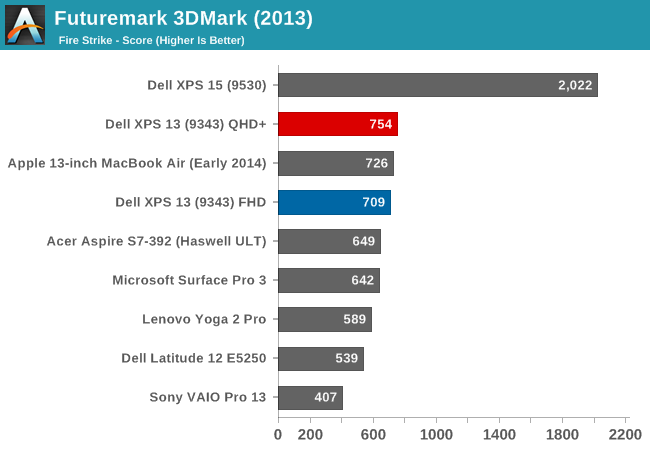
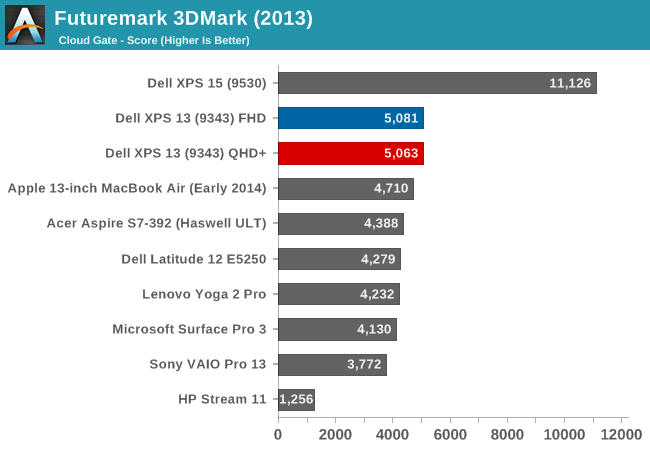
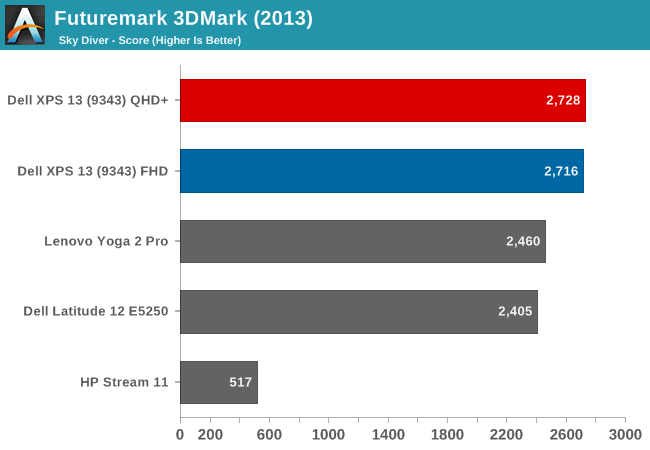

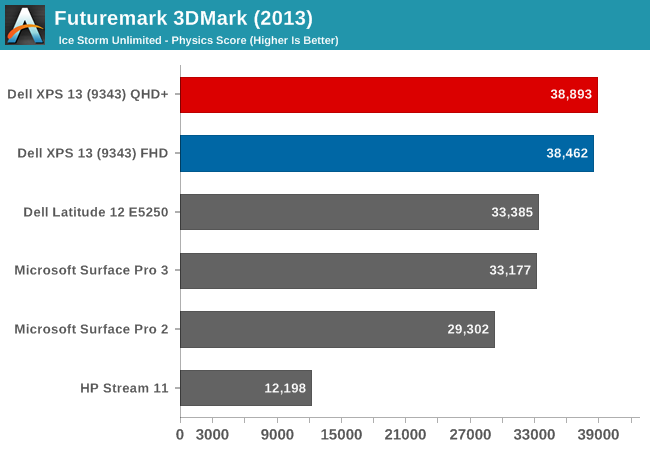
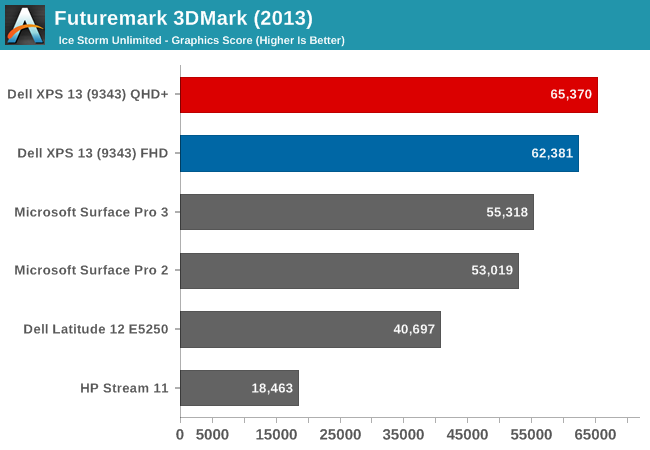
The 3DMark results begin to show the increased GPU performance of the Gen8 graphics. Broadwell-U outperforms all of the Haswell-U parts on all of the tests, and the QHD+ model gave a fraction more performance as well in a few tests.

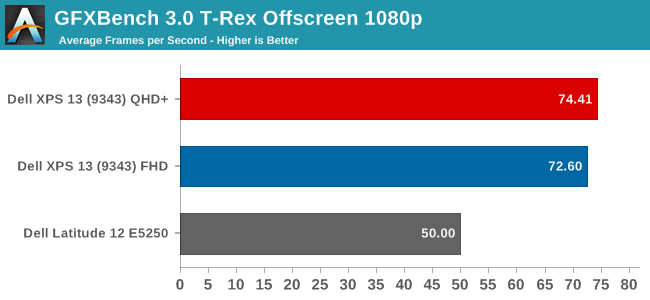

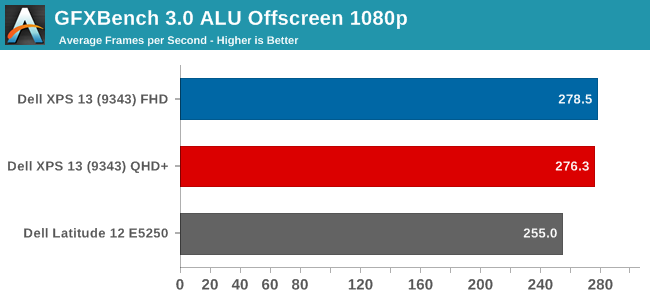
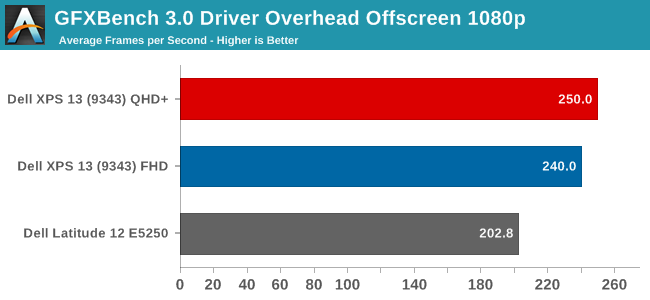
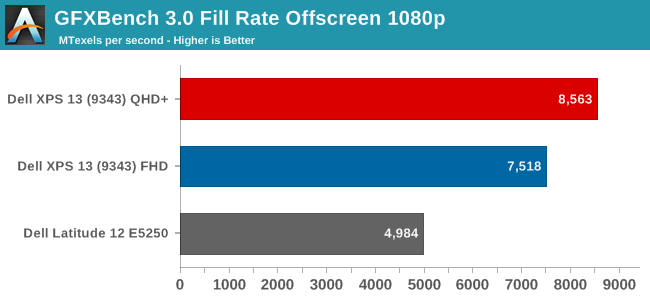
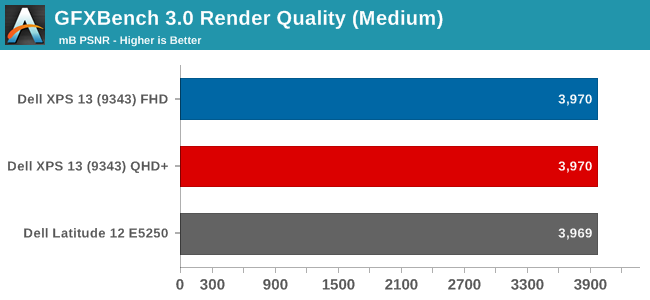
The initial results for the new GPU look pretty good, with the new GPU soundly beating the Haswell-U parts. The HP Stream 11, with just 4 EUs, trails quite far behind. GFXBench is one of our newer benchmark choices for Windows 8, and we will add more data as we get a few more devices to test.
Next, let's look at our gaming benchmarks. Due to the low performance of the integrated GPUs, I just ran our gaming tests at the Value (1366x768 ~Medium) settings.

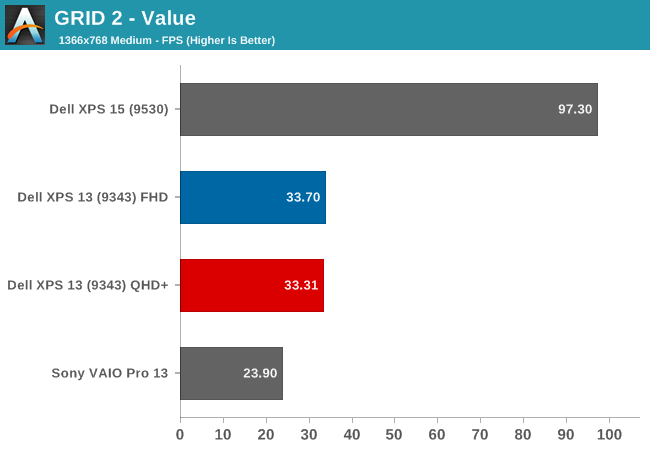

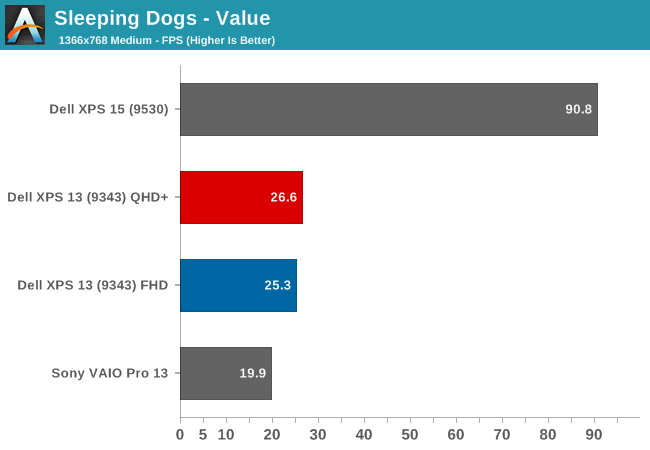
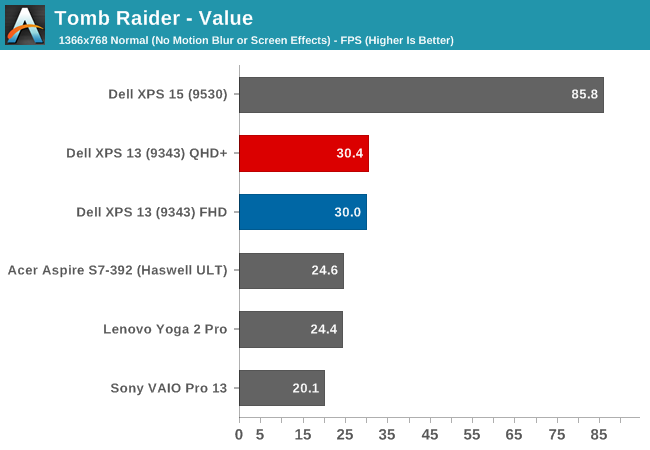
Here we can see once again that the new GPU is certainly stronger, but it is still not quite enough to make any of these games very playable on our Value settings. The Dell XPS 15, with its discrete GPU, carries a huge lead over the integrated GPU offerings. Still, the new Gen8 Graphics with more execution units per processor, as well as a change to the architecture of each execution unit, has made a healthy improvement. The new GPU has only eight EUs per sub-slice now, as compared to ten in Haswell-U, which help in many workloads. Ian has a nice writeup on the changes.
However, our gaming benchmarks are not tested at the lowest possible settings. All of the benchmarks start at 1366x768 with medium settings, so let's drop down another notch.
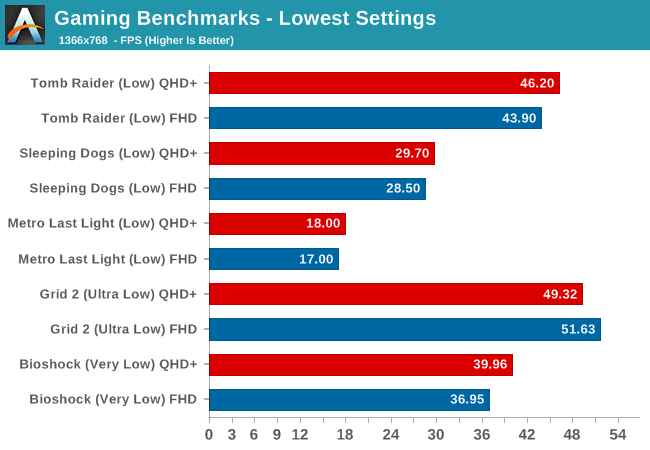
By setting the games to their lowest settings, some of them are now playable. We are still a long ways off of the performance of a discrete GPU, but slowly integrated graphics are improving.
Finally, we have a new gaming benchmark to add to our repertoire. Anand first used the DOTA 2 bench for the Surface Pro 3 review and it will be our go-to benchmark for devices like this without a discrete GPU. Our Value setting will be 1366x768 with all options off, low quality shadows, and medium textures. Midrange will be 1600x900 with all options enabled, medium shadows, and medium textures, and Enthusiast will be 1920x1080 with all options maxed out.
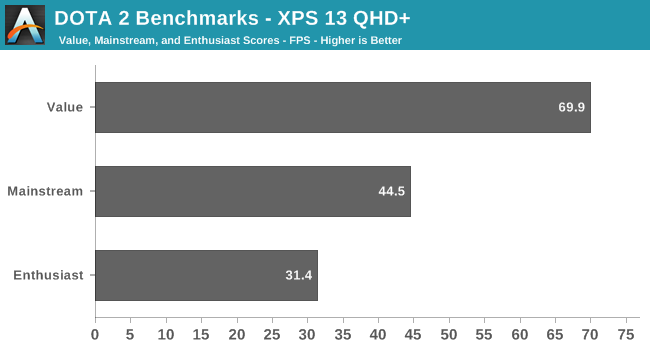
We do not have any other comparison points at the moment, but it is very clear that a game like DOTA 2 is very playable on a device with an integrated GPU. Frame rates, even with good settings, are very reasonable.
So Broadwell has raised the stakes again, but the end result is Intel's Integrated GPU is still not going to let you play AAA titles with good frame rates. Hopefully we can get some good comparisons between Broadwell-U and the AMD APUs in the near future. It will also be interesting to see what happens on the higher wattage Broadwell parts, some of which will contain significantly more EUs.










201 Comments
View All Comments
DanNeely - Thursday, February 19, 2015 - link
Have Dell/Sharp ever explained what is so special about the new display to get the bezels that small? They hyped it up as a Dell exclusive when first announced; but looking at it the first thing to come to mind is "smartphones have had bezels that small for a while; what's so special about making a laptop size screen the same way."PS No web cam fail picture? The one from Ars Technica's review was great.
http://cdn.arstechnica.net/wp-content/uploads/2015...
retrospooty - Thursday, February 19, 2015 - link
The question is, "why haven't other been doing this all along"... Or at least making an effort towards smaller bezels in general.jabber - Friday, February 20, 2015 - link
Just watch the flex as you open with a glass screen and bezels that thin."Ahh another fine morning, let's open up my lovely laptop and start work!"
'CRACK'
"Damn!"
retrospooty - Friday, February 20, 2015 - link
Its not going to crack when you open it... Dropping it may be a bigger worry than with other laptops, but not normal day to day usage.sorten - Friday, February 20, 2015 - link
jabber, you're expending a lot of energy to warn people about cracked screens.jabber - Friday, February 20, 2015 - link
Yes cos I've had quite a few come into me to fix. Didn't happen before screens had a glass touch layer on them.Well fancy that!
Not as robust as you would think. I'll take the non-touch option thanks.
fokka - Saturday, February 21, 2015 - link
sure, phone screens also were more robust when they were made out of plastic. the good thing is a laptop is closed when transporting it and since you're not just holding your laptop in one hand, chances it is dropped are also much smaller.glass on the other hand feels much nicer on touchscreens, imho it's much easier to clean and it can even make the screen lid more rigid.
i think panicing over broken laptop screens is a slight over reaction, but to each their own.
asliarun - Thursday, February 19, 2015 - link
As I understand it, the bezel is where the control circuitry (among other things like edge lighting) exists. IGZO or Indium Gallium Zinc Oxide transistors are transparent compared to amorphous silicon. Plus, they have significantly more electron mobility. All this combined means that the control circuitry can be etched on the panel itself instead of the bezel. Plus, the transparency and increased electron mobility allows them to make really high res displays that also consume less power.They even have prototypes of non-rectangular IGZO displays (such as truly circular displays).
But all this is based on reading a few articles, so feel free to correct me if I got something wrong.
kyuu - Monday, February 23, 2015 - link
It's not the IGZO tech that allows for the reduced bezels. This is evidenced by the fact that the 1080p non-IGZO option has the same sized bezels.Darkstone - Thursday, February 19, 2015 - link
It isn't special. It's just that nobody bothered to do it yet.I have an E6520, the bezels are around thumb-wide. But when i disassembly the display there is really only 3-4mm of metal to the side of the display. The rest of the space is air, an cable, and the solid magnesium frame. This laptop contains an completely standard display, an format that hasn't changed since.. a long time.
See https://www.youtube.com/watch?v=BSKZSjNuAr4 @ 4:00.
Of course that has it's advantages as well. If you drop your XPS 13 the display is progably more likely to break than a laptop with MBA-sized bezels. Mobile phones are more forgiving because there is less mass to begin with.